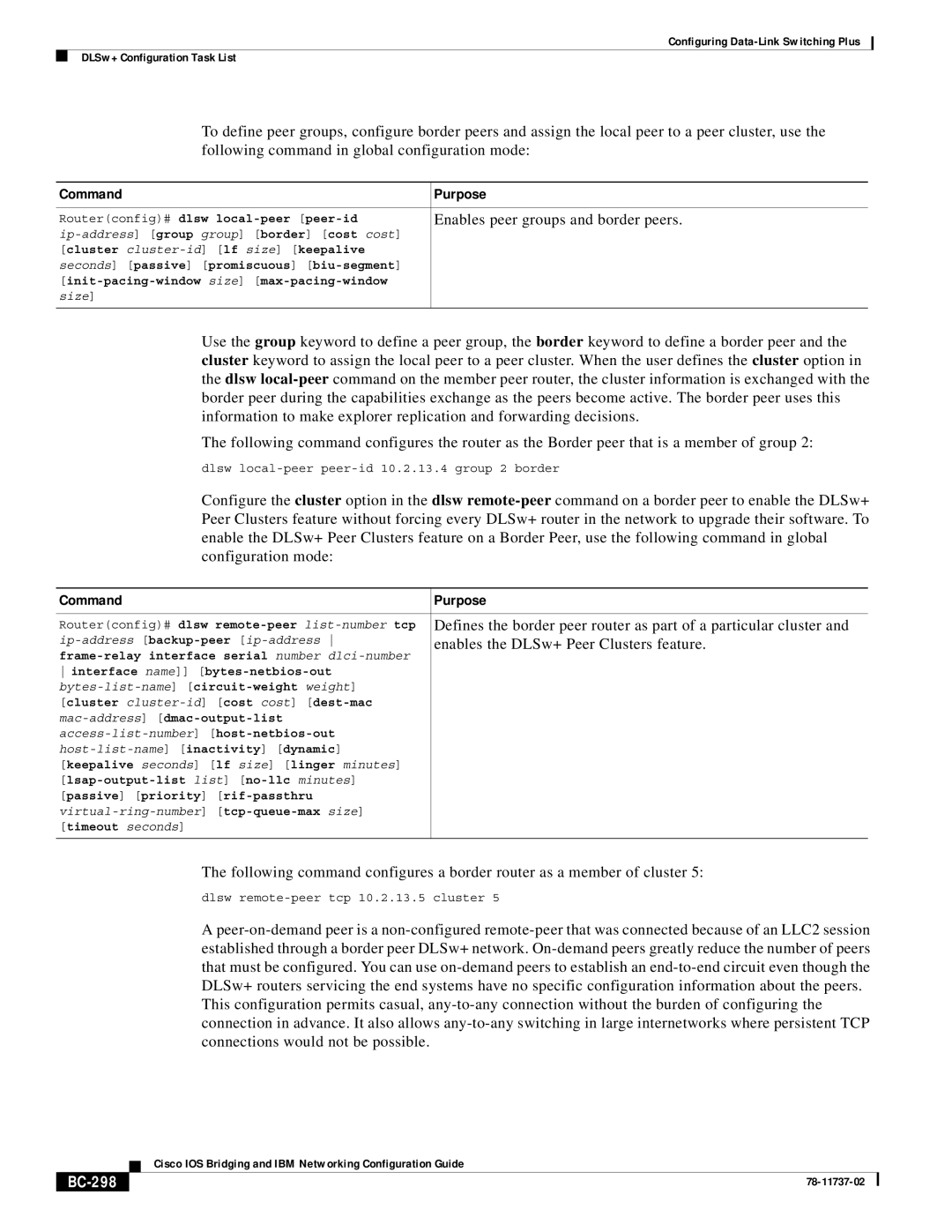Configuring Data-Link Switching Plus
DLSw+ Configuration Task List
To define peer groups, configure border peers and assign the local peer to a peer cluster, use the following command in global configuration mode:
Command | Purpose |
| |
Router(config)# dlsw local-peer [peer-id | Enables peer groups and border peers. |
ip-address] [group group] [border] [cost cost] | |
[cluster cluster-id] [lf size] [keepalive | |
seconds] [passive] [promiscuous] [biu-segment] | |
[init-pacing-window size] [max-pacing-window | |
size] | |
| |
Use the group keyword to define a peer group, the border keyword to define a border peer and the cluster keyword to assign the local peer to a peer cluster. When the user defines the cluster option in the dlsw local-peercommand on the member peer router, the cluster information is exchanged with the border peer during the capabilities exchange as the peers become active. The border peer uses this information to make explorer replication and forwarding decisions.
The following command configures the router as the Border peer that is a member of group 2:
dlsw local-peer peer-id 10.2.13.4 group 2 border
Configure the cluster option in the dlsw remote-peercommand on a border peer to enable the DLSw+ Peer Clusters feature without forcing every DLSw+ router in the network to upgrade their software. To enable the DLSw+ Peer Clusters feature on a Border Peer, use the following command in global configuration mode:
Command | Purpose |
| |
Router(config)# dlsw remote-peer list-numbertcp | Defines the border peer router as part of a particular cluster and |
ip-address [backup-peer[ip-address | enables the DLSw+ Peer Clusters feature. |
frame-relay interface serial number dlci-number | |
interface name]] [bytes-netbios-out | |
bytes-list-name][circuit-weightweight] | |
[cluster cluster-id] [cost cost] [dest-mac | |
mac-address][dmac-output-list | |
access-list-number][host-netbios-out | |
host-list-name] [inactivity] [dynamic] | |
[keepalive seconds] [lf size] [linger minutes] | |
[lsap-output-list list] [no-llc minutes] | |
[passive] [priority] [rif-passthru | |
virtual-ring-number][tcp-queue-maxsize] | |
[timeout seconds] | |
| |
The following command configures a border router as a member of cluster 5:
dlsw remote-peer tcp 10.2.13.5 cluster 5
Apeer-on-demand peer is a non-configured remote-peer that was connected because of an LLC2 session established through a border peer DLSw+ network. On-demand peers greatly reduce the number of peers that must be configured. You can use on-demand peers to establish an end-to-end circuit even though the DLSw+ routers servicing the end systems have no specific configuration information about the peers. This configuration permits casual, any-to-any connection without the burden of configuring the connection in advance. It also allows any-to-any switching in large internetworks where persistent TCP connections would not be possible.
| Cisco IOS Bridging and IBM Networking Configuration Guide |
BC-298 | 78-11737-02 |

